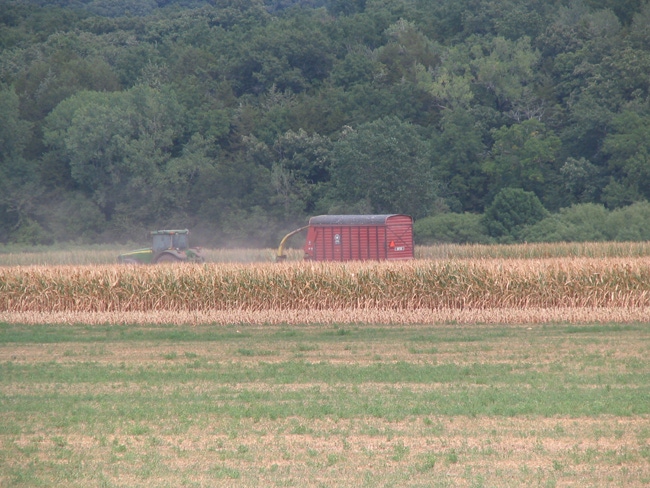August 27, 2012

The corn crop rating in Illinois stays in the low single digits. As the season winds down on one of the most drought-reduced corn crops in Illinois history, a number of factors are at play that will affect crop management for the coming year.
While some parts of Illinois have had rain in recent weeks, others have received little or none, and some areas have had seasonal rainfall totals that are 8 to 10 in. below normal. In areas where the crop is poor, it has used less than the normal 20 to 22 in. of water, but with the low rainfall, soil in many areas will need to take in at least 6 to 8 in. of water to recharge to field capacity.
Average precipitation between Sept. 1 and March 31 ranges from about 15 in. in northwestern Illinois to about 30 in. in the southernmost part of the state. While it is not clear if the drought pattern is persisting, only half of this amount – preferably in smaller events so that more of it gets into the soil instead of running off – is needed to recharge soil water. There is a high probability that this much precipitation will fall.
A snowy winter might also help with restoring moisture levels. Snow melts slowly, and most of the melt water moves into the soil. However, snow is not always distributed evenly across the landscape, and a relatively small part of total precipitation comes in the form of snow.
Some tillage is already being done in areas where the harvest is underway, and some fields with no grain are being tilled. Tillage following extended periods of dry weather often brings up large, hard clods, but initial reports indicate that the soil is friable, breaking apart better than expected.
Tillage last fall and field operations this year took place when soils were relatively dry, so there has been less than normal compaction due to heavy equipment on moist soils. While rainfall does not cause much compaction – it does not produce high weight loads – it does cause surface soils to run together to form a hard surface that can increase water runoff on slopes.
“Expect soils to be mellower than normal during fall tillage and match the tillage operation, if any is needed, to this condition,” Nafziger advised. That includes paying attention to how much residue is being left on the surface.
The 2012 Illinois winter wheat crop was good, and with the loss of income from poor corn crops, along with early harvest or destruction of corn, some producers are considering wheat as a follow crop for corn in dry areas. In some cases, wheat (or rye) might also be used as a cover crop to take up some of the nitrogen left in the soil.
Although having some of the leftover soil nitrogen stay in a (grass) cover crop for a subsequent corn crop may seem to be a good way to recycle nitrogen, allowing rye or wheat cover crops to grow into the spring can interfere with establishing the corn crop, especially if it is to be planted in early April. Managing a grass cover crop to establish soybeans might be easier, although wet soils and a heavy cover-crop residue can present challenges for any crop that follows a cover crop.
Soybeans will be able to take up some of the nitrogen released by the breakdown of a cover crop, but then might fix less from the atmosphere, depending on when the nitrogen is released. Thus, there not likely to be a significant economic gain from having a cover crop tie up nitrogen and release it during soybean growth. However, it will keep some nitrogen in the field, thereby reducing the amount that reaches surface water.
“While we know there is some nitrogen left in dry soils now, the amount available to next year’s crop will depend on the weather between now and next spring,” Nafziger said.
Other factors associated with a drought-damaged corn crop may actually improve field conditions for the next corn crop. Corn that stops growing in mid-season does not produce much lignin, so its residue is softer, it breaks down faster, and planting into it is easier. There is also less residue to contend with.
“This is not a suggestion to plant more corn and fewer soybean acres next year following this year’s corn crop,” said Nafziger. “Corn following corn is showing more stress effects again this year, in some areas for a third year in a row. Even though a field with a short corn crop this year may be more ‘corn-friendly’ than normal next year, it is unlikely that corn following a corn crop – even a low-yielding one – will yield more than corn following soybean.”
You May Also Like




